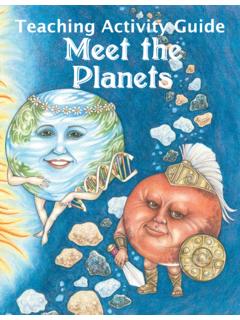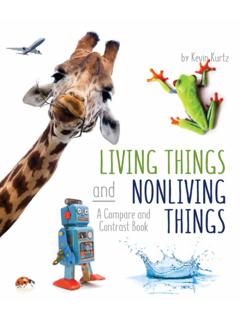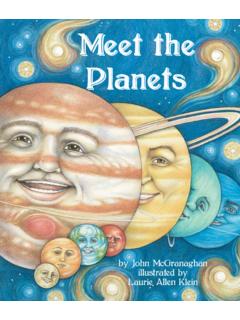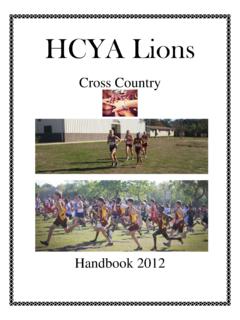Transcription of Teaching Activity Guide - Arbordale Publishing
1 Teaching Activity GuideTable of Contents3 How to Use This Activity Guide (General)4 What Do Children Already Know?4 Pre-Reading Questions5 Comprehension Questions & Writing Prompts6 Language Arts & Science: Basic Needs7 Cross-Curricular Vocabulary Activities8 Word Bank9 Cross Curricular: Silly Sentences10 Language Arts: Sequence Sentence Strips13 Language Arts: Comparing Stories15 Word Search16 What Comes From Trees?18 Science Journal (Vocabulary)20 Plants: True or False?21 Math Cards23 Maps24 Coloring Pages25 Glossary29 Answers30 Appendix A What Children Know Cards31 Appendix B Venn DiagramCopyright 2012 Arbordale PublishingThese activities may be copied for personal and non-commercial use in educational Publishingformerly Sylvan Dell PublishingMt. Pleasant, SC 29464by Marianne Berkesillustrated by Kathleen RietzHow to Use This Activity Guide (General)There are a wide variety of activities that teach or supplement all curricular areas.
2 The activities are easily adapted up or down depending on the age and abilities of the children involved. And, it is easy to pick and choose what is appropriate for your setting and the time involved. Most activities can be done with an individual child or a group of children. For teachers in the classroom: We understand that time is at a premium and that, especially in the early grades, much time is spent Teaching language arts. All Arbordale titles are specifically selected and developed to get children excited about learning other subjects (science, geography, social studies, math, etc.) while reading (or being read to). These activities are designed to be as comprehensive and cross-curricular as possible. If you are Teaching sentence structure in writing, why not use sentences that teach science or social studies? We also know and understand that you must account for all activities done in the classroom. While each title is aligned to all of the state standards (both the text and the For Creative Minds), it would be near impossible to align all of these activities to each state s standards at each grade level.
3 However, we do include some of the general wording of the CORE language arts and math standards, as well as some of the very general science or social studies standards. You ll find them listed as objectives in italics. You should be able to match these objectives with your state standards fairly homeschooling parents and teachers in private schools: Use as above. Aren t you glad you don t have to worry about state standards?For parents/caregivers: Two of the most important gifts you can give your child is the love of reading and the desire to learn. Those passions are instilled in your child long before he or she steps into a classroom. Many adults enjoy reading historical fiction novels .. fun to read but also to learn (or remember learning) about historical events. Not only does Arbordale publish stories that are fun to read and that can be used as bedtime books or quiet lap reading books, but each story has non-fiction facts woven through the story or has some underlying educational component to sneak in learning.
4 Use the For Creative Minds section in the book itself and these activities to expand on your child s interest or curiosity in the subject. They are designed to introduce a subject so you don t need to be an expert (but you will probably look like one to your child)! Pick and choose the activities to help make learning fun!For librarians and bookstore employees, after-school program leaders and zoo, aquariums, nature center, park & museum educators: Whether reading a book for story time or using the book to supplement an educational program, feel free to use the activities in your programs. We have done the hard part for you. Arbordale Publishing 4 What Do Children Already Know?Young children are naturally inquisitive and are sponges for information. The whole purpose of this Activity is to help children verify the information they know (or think they know) and to get them thinking beyond the box about a particular subject.
5 Before reading the book, ask the children what they know about the subject. A list of suggested questions is below. The children should write down their answers (or adults for them if the children are not yet writing) on the chart found in Appendix A, index cards, or post-it notes. Their answers should be placed on a before reading panel. If doing this as a group, you could use a bulletin board or even a blackboard. If doing this with individual children, you can use a plain manila folder with the front cover the before reading panel. Either way, you will need two more panels or sections one called correct answer and the other look for correct answer. Do the children have any more questions about the subject ? If so, write them down to see if they are answered in the reading the book, go back to the questions and answers and determine whether the children s answers were correct or not. If the answer was correct, move that card to the correct answer panel.
6 If the answer was incorrect, go back to the book to find the correct information. If the child/children have more questions that were not answered, they should look them up. When an answer has been found and corrected, the card can be moved to the correct answer readingcorrectanswerlook forcorrect answerQuestions: what class of animal is a dog?Answers: A dog is a mammal, like us. Questions: what class of animal is a dolphin?Answers: A dolphin is a mammal, like us. Questions: what class of animal is a parrot?Answers: A a parrot is a bird because it has feathers. Pre-Reading QuestionsWhat are some parts of a tree?What is a tree (animal, plant, or other)?Why would a bear climb a tree?What are some other animals that might live in or around a tree?Comprehension Questions & Writing PromptsWhat anchors the tree?What feeds the roots?What waters the soil?What grows from the branches?What does the sun do for the tree?What gathers the pollen?
7 Why was the tree important to the bees?Why did the tree need the rain? Where do the bees live?What do the bees make in the hive?Why did the bear climb the tree?What did the bear eat?What did the bees do to the bear that ate their honey?Why did the bees do that?Write or tell what you think the bear did after the bees chased you think the bear will climb that tree again? Why or why not?What are some other animals that live in or around trees. Can you write (or tell) a story about that animal and a tree? Arbordale Publishing 5 Objective Core Language Arts, Speaking and Listening: Ask and answer questions about key details in a text read aloud or information presented orally or through other understanding of a text read aloud or information presented orally or through other media by asking and answering questions about key details and requesting clarification if something is not or describe key ideas or details from a text read aloud or information presented orally or through other stories, including key details, and demonstrate understanding of their central message or and answer such questions as who, what, where, when, why, and how to demonstrate understanding of key details in a the story and write down any words that relate to how the plants or animal(s)meet their basic needs.
8 Can you discover more about how needs are met and draw or write about it? For example under water, the author used rain but plants can be watered with a watering can, hose or irrigation, and a bear could be drinking water from a not mentioned in the text, are there any indications in the illustrations of how these needs are met? Can you describe, draw, or write an explanation of how the needs are met? Language Arts & Science: Basic NeedsObjective: Describe the basic needs of living things and how they are need water, nutrients, light and space to grow and reproduce; animals need water, oxygen, food, and shelter/space to grow and reproduce. Arbordale Publishing 6 treebeebearCross-Curricular Vocabulary Activities Arbordale Publishing 7 Objective Core Language Arts: Determine or clarify the meaning of unknown and multiple-meaning words and phrases based on grade-level reading and new meanings for familiar words and apply them accurately ( , duck is a bird & the verb to duck).
9 Use words & phrases acquired through conversations, reading/being read to, and responding to the meaning of general academic and domain-specific words and phrases in a text relevant to a grade level topic or subject the function of nouns, pronouns, verbs, adjectives, and adverbs in general and their functions in particular informative/explanatory texts in which they introduce a topic, use facts and definitions to develop points, and provide a concluding statement or frequently occurring game: This Activity is a very general idea and is designed to get children thinking of vocabulary words that will then be used as the beginning vocabulary list for a science lesson. Select an illustration from the book and give the children a specific length of time (five minutes?) to write down all the words they can think of about the particular subject. It is helpful to project an illustration on a whiteboard. Use eBook or book preview found at The children s word list should include anything and everything that comes to mind, including nouns, verbs, and adjectives.
10 At the end of the time, have each child take turns reading a word from his/her list. If anyone else has the word, the reader does nothing. However, if the reader is the only one with the word, he/she should circle it. While reading the list, one person should write the word on a flashcard or large index card and post it on a bulletin board or the end, the child with the most words circled wins. And you have a start to your science vocabulary list. Note: if a child uses an incorrect word, this is a good time to explain the proper word or the proper usage. Glossary/Vocabulary words: Have children write words on index cards, a poster board, or on a chalkboard for a word wall. If writing on poster board or chalkboard, you might want to sort words into nouns, verbs, etc. right away to save a step later if using for Silly Sentences. Leaving the words posted (even on a refrigerator at home) allows the children to see and think about them frequently.








